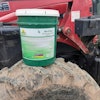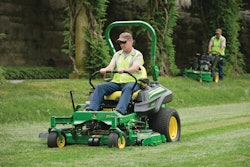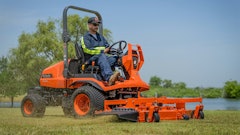
Jeff Plotka is the president of Precision Work Inc. based in Port Washington, NY, on Long Island. Precision Work distributes high-quality power equipment to independent servicing dealers throughout the nine Northeastern states from Maine to Pennsylvania. Plotka is also the 2015-16 president and director of OPEESA, the Outdoor Power Equipment and Engine Service Association. OPEESA's membership includes more than 100 distributors and manufacturers of engines and equipment. Plotka spoke to us about the key issues the lawn equipment distribution chain is facing right now.
Q: What would you say is the biggest challenge equipment distributors are facing right now?
Technology is one of the biggest challenges distributors are facing today. It is important to adopt new technology so that you can gain efficiencies in the business, but also to help your customers (dealers) interact with you as easily as possible.
Q: Distributors like your company sell to servicing dealers, which then sell to end-users such as landscapers. Are you concerned that the number of dealers in operation today is much smaller than it was 20 or even 10 years ago?
It is very concerning for us. It is sad to see family-owned dealerships close and not have anyone take their place. Our company sells high-end homeowner/commercial products that are not “disposable”. They require someone with mechanical abilities to diagnose issues and repair them. If there are fewer and fewer dealers servicing products, the consumers are going to have to travel farther and pay more to service their products.
Q: What is OPEESA doing to help ensure a reliable supply of servicing equipment dealers in the marketplace so contractors have places to go when in need of equipment repairs?
OPEESA has continually looked at the dealer development dilemma and actually, in the ESA days, established the technician certification program which is now run by the EETC (Equipment & Engine Training Council). We are constantly providing topics at our Annual Meetings that not only help the membership, but many of these practices can be passed on to the retail channel as well.
OPEESA is also an ongoing supporter of the EETC, working with them on continuing to provide dealer update schools, technical training and more. For the past couple of years, OPEESA has provided a scholarship to the EETC for someone working on their technical certification. We hope that through this collaboration with the EETC, we can get existing mechanics trained, but more importantly, get more people interested in small engines and how they work.
Q: What role is e-commerce playing in the lawn equipment distribution and/or retail business, and do you think it is a good or bad development for the industry?
Technology is here to stay, but it is a slippery slope. While e-commerce is an important tool to use to streamline the processes between you and your customers, it gets very tempting to utilize that technology to step over the dealer and sell direct. That is where you have to stick to the business model you are in.
Q: Some manufacturers sell equipment directly to dealers, bypassing the distributor. What do distributors need to do in today’s market to continue playing a vital role in the equipment supply chain?
Distributors need to make sure that they continue to provide the level of service and support at the local level that the manufacturer can’t provide from where they are. For example:
The personal relationships that the distributors have and continue to maintain because they are physically in the dealerships on a regular basis.
The unique issues that a particular dealer may be facing that another dealer doesn’t can only be seen through a “boots on the ground” relationship.
Monitoring a dealer’s financial health and helping them move older inventory through the pipeline has to be done on the local level, not from an office far away.




















